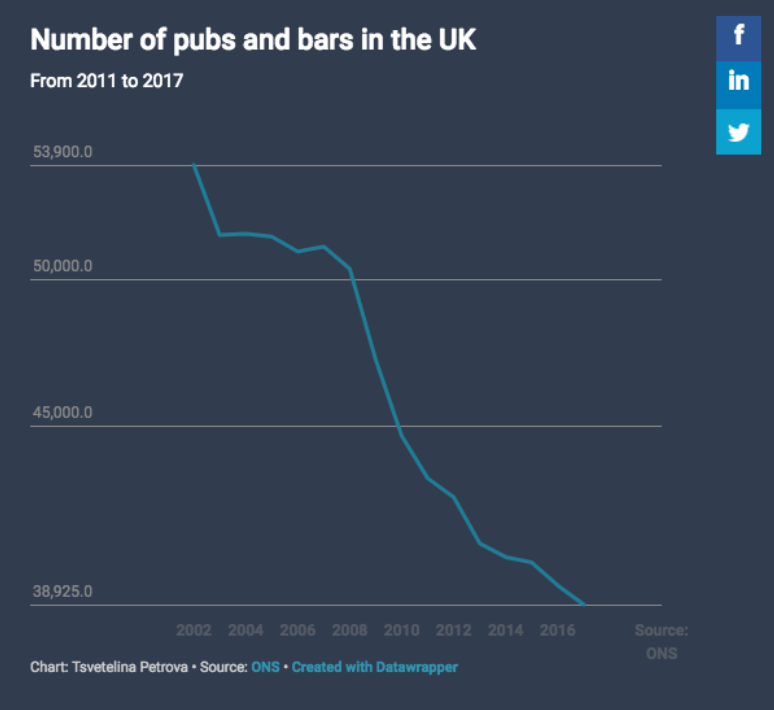Almost a quarter of the UK pubs have closed in the last decade. The number of smaller pubs is dramatically falling while larger ones are still steady.
Since 2011, 22% of the UK pubs have closed their doors. According to the Office for National Statistics (OSN), the number of pubs had decreased from 52,500 in 2001 to 38,815 due to various reasons. These include increasing costs and business rates, demand for healthier lifestyle, cheaper alcohol prices in supermarkets and growth of home entertainment. One in four independent pubs has shut down, while the number of boozers such as JD Wetherspoon has stayed almost steady.
The closures have hit urban pubs more than the ones in rural areas and villages. Actually, employment in rural pubs has gone up almost 24 per cent. However, Newham was the worst-affected area in the country. The east London borough had 105 pubs in 2001, but now has 45.
Brigid Simmonds, the chief executive of the British Beer and Pub Association (BBPA), said to The Guardian: “Unless more is done to help alleviate the cost pressures pubs face … they will continue to close and jobs will be lost.”
The number of small pubs has fallen from around 39,000 to less than 23,000 since 2001. In contrast the number of medium and large ones has risen with approximately 2,000. The shift towards larger pubs which obviously need more staff, means the number of employees is around 450,000 – almost the same as in 2001.
Words: Tsvetelina Petrova | Subbing: Vanessa Craus, Lucija Duzel



